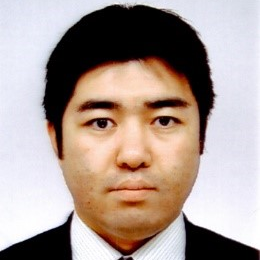Micro/Nanosensors for Cellular/Tissue Measurement
A special issue of Sensors (ISSN 1424-8220). This special issue belongs to the section "Physical Sensors".
Deadline for manuscript submissions: closed (28 February 2020) | Viewed by 12791
Special Issue Editor
Special Issue Information
Dear Colleagues,
The aim of this Special Issue is to collect recent research contributions in micro/nano sensors for biomedical applications. Micro/nano sensors utilizing various principles such as optical (fluorescence and luminescence), electrochemical, acoustic, and magnetic detection are important for cellular/tissue analysis, medical diagnostics, environmental monitoring, healthcare, and food safety. Micro and nano fabrication processes, the integration of sensors into microfluidic devices and other devices, and the signal processing of acquired data have been the subjects of active study in past decades in order to develop micro/nano sensors for biomedical applications.
In this Special Issue, we welcome submissions on articles addressing micro/nano sensor technologies such as optical, electrochemical, acoustic, and magnetic detection (micro/nano sensors utilizing other principles are also welcome), and the application of micro/nano sensors to biomedical applications. Both review articles and original research papers are strongly encouraged.
Dr. Hisataka Maruyama
Guest Editor
Manuscript Submission Information
Manuscripts should be submitted online at www.mdpi.com by registering and logging in to this website. Once you are registered, click here to go to the submission form. Manuscripts can be submitted until the deadline. All submissions that pass pre-check are peer-reviewed. Accepted papers will be published continuously in the journal (as soon as accepted) and will be listed together on the special issue website. Research articles, review articles as well as short communications are invited. For planned papers, a title and short abstract (about 250 words) can be sent to the Editorial Office for assessment.
Submitted manuscripts should not have been published previously, nor be under consideration for publication elsewhere (except conference proceedings papers). All manuscripts are thoroughly refereed through a single-blind peer-review process. A guide for authors and other relevant information for submission of manuscripts is available on the Instructions for Authors page. Sensors is an international peer-reviewed open access semimonthly journal published by MDPI.
Please visit the Instructions for Authors page before submitting a manuscript. The Article Processing Charge (APC) for publication in this open access journal is 2600 CHF (Swiss Francs). Submitted papers should be well formatted and use good English. Authors may use MDPI's English editing service prior to publication or during author revisions.
Keywords
- biomedical
- fluorescence/luminescence sensors
- electrochemical sensors
- MEMS sensors
- nanomaterials
- physiological properties
- mechanical properties
- environmental monitoring
- single cell measurement
- spheroid measurement
- tissue measurement
Benefits of Publishing in a Special Issue
- Ease of navigation: Grouping papers by topic helps scholars navigate broad scope journals more efficiently.
- Greater discoverability: Special Issues support the reach and impact of scientific research. Articles in Special Issues are more discoverable and cited more frequently.
- Expansion of research network: Special Issues facilitate connections among authors, fostering scientific collaborations.
- External promotion: Articles in Special Issues are often promoted through the journal's social media, increasing their visibility.
- Reprint: MDPI Books provides the opportunity to republish successful Special Issues in book format, both online and in print.
Further information on MDPI's Special Issue policies can be found here.






